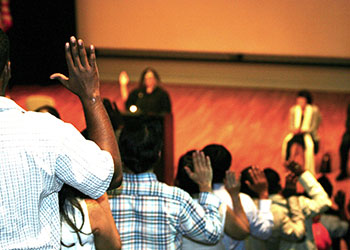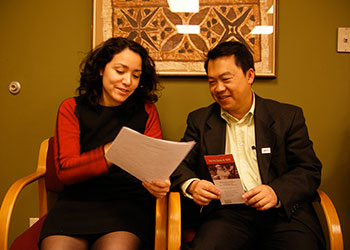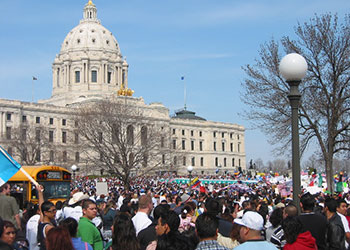Archives
U.S. Offers Protected Status For People From Myanmar As Coup Leaders Crack Down
“When The Bus Took Off, We All Cheered”: Asylum-Seekers Trump Forced To Wait In Mexico Are Now Arriving In The US
US visa applicants denied under Trump’s travel ban can reapply
Cases testing Trump’s “public charge” immigration rule are dismissed
Tell President Biden: Stop Deporting Haitians
Since the Biden administration took office, more than 15 deportation flights have sent more than 900 people back to Haiti. Pregnant women and children as young as two years old have been deported. These deportations continue while Haiti is in the middle of a violent political crisis and while the country remains highly vulnerable to a devastating coronavirus outbreak. The coronavirus remains rampant in U.S. immigration processing and detention centers and can be easily brought back to impoverished communities in Haiti. The Haitian government has broken down and is unable to protect its citizens from gang violence or public health crisis.
Call President Biden at the White House comment line: 202-456-1111. Tell him to stop deportations to Haiti now.
Legal background: A Texas judge blocked the Biden Administration’s 100-day moratorium on deportations. The Biden Administration also left in place a Title 42 “public health” order for speedy removal without hearings for anyone crossing the border. That CDC order was entered under pressure from the Trump administration, over the objections of public health staff in the CDC, and despite complete lack of any public health justification.
Factual background: Buzzfeed News reports that administration officials acknowledge the dangers facing Haitian deportees.
“Department of Homeland Security officials acknowledged internally that deported Haitian immigrants “may face harm” upon returning to their home country due to violent crime and the political instability that has rocked the country in recent months…
“The report obtained by BuzzFeed News responds to a request from the meeting: ‘Embassy Port au Prince briefed on the deterioration of rule of law in Haiti in recent months, and ongoing gang violence and human rights violations in the country. In light of these developments, DHS US Citizenship and Immigration Services will reevaluate whether expelled Haitians would face harm upon return to Haiti,” it begins, before declaring that ‘based on a recent analysis of conditions in Haiti, USCIS believes that Haitians removed to Haiti may face harm upon return to Haiti as follows.’”
Haiti’s current president, Jovenal Moïse, continues in power although his term ended in February. Protests—often violently suppressed—challenge his rule by executive orders, his dissolution of parliament a year ago, and his refusal to hold elections for local governments and the country’s legislative body since 2018. He has unilaterally “retired” three members of the nation’s Supreme Court, saying he did so to “protect” the court. Protesters also cite what they call rampant government corruption and gang violence.
Add to the political disaster the country’s failure to recover after a devastating 2010 earthquake that killed 250,000 people and displaced 1.5 million: half of the country’s entire population. Before the 2010 earthquake, Haiti was one of the poorest countries in the hemisphere. After the earthquake, recovery seemed impossible. Cholera, brought to Haiti by UN peacekeepers in 2010, infected 800,000 Haitians and killed more than 10,000. Since 2010, three hurricanes and another earthquake have further delayed recovery. Ongoing human rights abuses include massacres, gender-based violence, and child labor amounting to near-slavery.
Call President Biden at the White House comment line: 202-456-1111. Tell him to stop deportations to Haiti now.
Biden administration giving temporary protected status to thousands of Venezuelans in U.S.
Frequently Asked Questions: Vaccine Eligibility Expansion
How were qualifying medical conditions chosen?
- The list of underlying medical conditions for the next eligibility groups was adapted from conditions listed on CDC’s People with Certain Medical Conditions.
- Minnesota’s list includes recommendations from Minnesota’s health care providers. The list is based on current information and research for conditions that are known to put people at increased risk for severe disease.
How were qualifying essential workers chosen?
- Essential workers were selected by CDC’s Advisory Committee on Immunization Practices (ACIP). ACIP used the Guidance on the Essential Critical Infrastructure Workforce that the Cybersecurity & Infrastructure Security Agency (CISA) publishes to help define the groups of workers. ACIP defined frontline essential workers (those included in 1b) as the subset of essential workers likely at highest risk for work-related exposure to COVID-19.
- Sub-prioritization was guided by the risk criteria presented in the Framework for Ethical Allocation of COVID-19 Vaccine, published by the National Academies of Sciences, Engineering and Medicine, including:
- Risk of infection: People have higher prioritization because they work or live in settings with a higher risk of transmission occurring because SARS-CoV-2 is circulating.
- Risk of severe morbidity and mortality: People who are older and that have comorbid conditions are at higher risk of severe outcomes and death.
- Risk of transmitting to others (at work and at home): People have higher priority because they live or work in settings where transmission is more likely to occur.
- Risk of negative societal impact: People have higher priority due to the extent that society and other people’s lives depend on them being healthy.
I think I’m an essential worker but I’m not sure given the guidance. How can I find out? Will my employer tell me?
- If you are unsure whether your job qualifies you for a vaccine, you can check with your employer.
If additional conditions are added after the guidance document is finalized, there will inevitably be a barrage of questions about how they can modify their submission on the Vaccine Connector to show they have X new qualifying condition. Will there be a phone number where people can call to update their submission?
- Minnesotans can contact 833-431-2053 to make updates to their Vaccine Connector submissions.
I was already eligible for a shot but I have not gotten one. Why are we expanding eligibility when we haven’t completed earlier phases?
- Minnesota is building out a strong network of providers to vaccinate all Minnesotans. As the supply of vaccine increases, we are expanding eligibility to give more flexibility to providers and get more life-saving vaccine to more people, including those with underlying health conditions and workplace exposure risk.
- Minnesotans who were previously eligible to receive a vaccine are still eligible. Providers will continue to administer doses to healthcare workers, K-12 educators and child care providers, long-term care residents and Minnesotans age 65 years and over.
- We have made great strides vaccinating those populations: In addition to 70% of seniors getting vaccinated this week, nearly 60% of educators and child care workers have been vaccinated, and 71% of healthcare workers have gotten at least one dose of the vaccine.
Are health care providers going to be getting more vaccine allocated to vaccinate these groups, or is vaccination only going to be at special sites?
- We anticipate vaccine deliveries from the federal government will increase in the weeks ahead. As supplies increase, the state is building a strong and stable network of various providers to get vaccine to as many people as possible.
- Minnesotans can find vaccine availability near them using the Vaccine Locator Map.
Can employers require an employee be vaccinated?
The state cannot provide legal advice to either employers or employees. In Dec 2020, the Equal Employment Opportunity Commission released guidance that generally speaks to this topic. Please visit the EEOC website at www.eeoc.gov for additional information and details.




